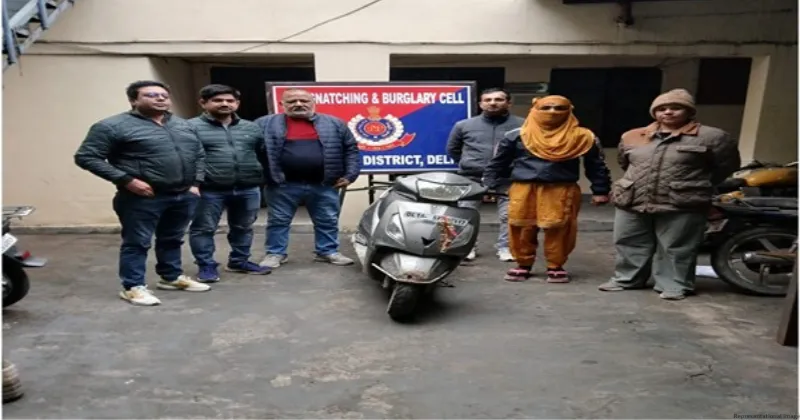Model for a Developed Rajasthan Economic Vision and Strategy

In the recent past , when the Bhajan Lal government of Rajasthan presented its first full-term budget, it aimed to elevate the state’s economy to $350 billion in the coming years. In recent political discussions, the phrase “double engine government” has been frequently used by a political party, especially during election times. Progress towards a developed economy is now entirely dependent on the government’s firm determination. If this strong resolve is visible in the implementation of financial budgets and all economic policies, perhaps the phrase “double engine government” will establish itself as an idiom in the world of language and literature.
The Rajasthan government has made an effort in this direction. As of last year, the state’s GDP was approximately Rs 15.7 trillion, with the service sector leading the way, contributing 48%, followed by agriculture and manufacturing, both contributing roughly 28%. Per capita income for 2022-23 was Rs 1,51,559, with an 11% increase in the fiscal year 2023-24, reaching Rs 1,67,614. Although this per capita income is about Rs 50,000 higher than the national average, it remains significantly lower than that of other developed states, especially given the large population. Consequently, according to recent “CMIE” data, Rajasthan’s unemployment rate is 28.5%, the second highest in India after Haryana.
To move towards a developed Rajasthan, fundamental changes in the State’s economic policies are required. For instance, Jaipur, the most developed city in the state, must be rapidly brought to the forefront of India’s economic map, akin to how cities like Gurugram, Noida, Hyderabad, Pune, and Bengaluru have carved their identities in the last 2 to 3 decades. Jaipur is much closer to Delhi and NCR compared to other major cities and state capitals. If Jaipur is provided with special facilities in certain sectors, it would not only benefit the youth by creating job opportunities but also serve as an additional revenue source for the state. It could also attract non-resident Rajasthani and Marwari investors. The state government should act swiftly in this regard as there is little room left for economic expansion in Delhi and NCR. The government should initiate dialogues with major industrial houses as soon as possible.
In another aspect, the coaching institutes in Kota are renowned across the country and are also economically successful. The government should now encourage these institutes to expand further and consider listing them as public companies in the Indian capital market. This is necessary because the stock market has become the first investment priority for the common man, and bank interest rates are no longer considered as attractive. If these coaching institutes become publicly listed companies, it would provide an investment opportunity for people in Rajasthan and other parts of the country, initiating a new wave of industrial development in the state.
Thirdly, there is a need for a rapid mental shift among Marwari investors, who must start thinking like Gujarati investors, enabling Rajasthan to become as economically established as Gujarat. There is no doubt that geographical challenges prevent Rajasthan from having the same natural advantages for business as Gujarat or other developed states. Because of this, Marwari traders from Rajasthan had migrated to other states in the past decades. However, it must also be understood that now all those Marwari traders, who are based in various parts of the country — such as Ahmedabad, Surat, Vapi in Gujarat; Mumbai, Nagpur in Maharashtra; Kolkata in Bengal; Cochin in Kerala; Guwahati, Jorhat in Assam; Ludhiana in Punjab; and many other cities like Delhi—have established a significant reputation in these regions while originally being from Rajasthan. All of them should now establish the next stage of their businesses in Rajasthan through new methods of supply chain management or modern management practices, and the Rajasthan government should provide them with every possible facility. It’s also crucial for non-resident Marwari businessmen and investors to partner with the government under public-private partnerships to contribute to infrastructure development in Rajasthan’s smaller cities. This could be a fantastic start to Rajasthan’s economic growth, enabling the state to present an economic model like Gujarat’s and even surpass other developed states. After all, Marwari traders have an inherent knack for business, which is a natural source of profit for the economy.
Fourthly, tourism development must be a central part of Rajasthan’s economic policies. In this age of social media, citizens must take the initiative to promote tourism in the state. They must cultivate a refined social culture and prioritize cleanliness in their regions. The state government’s top priority should be the preservation of heritage objects and sites in every city, involving village panchayats in this effort. In the budget, the Bhajan Lal government allocated a significant amount to a famous temple in Rajasthan, which is a commendable step for tourism. However, the government seems to have overlooked the fact that several other major religious sites, which attract devotees from across the country, are still not connected by rail. The government needs to address this issue positively. Although air travel facilities have been established in some small towns in recent years, they lack continuity because profitability is prioritized, disappointing citizens. Therefore, it is essential that before developing tourism facilities, more attention should be focused on modern or at least convenient transportation facilities.
THE VIEWS EXPRESSED BY THE AUTHOR ARE PERSONAL
Dr PS Vohra The author is columnist and financial thinker






















